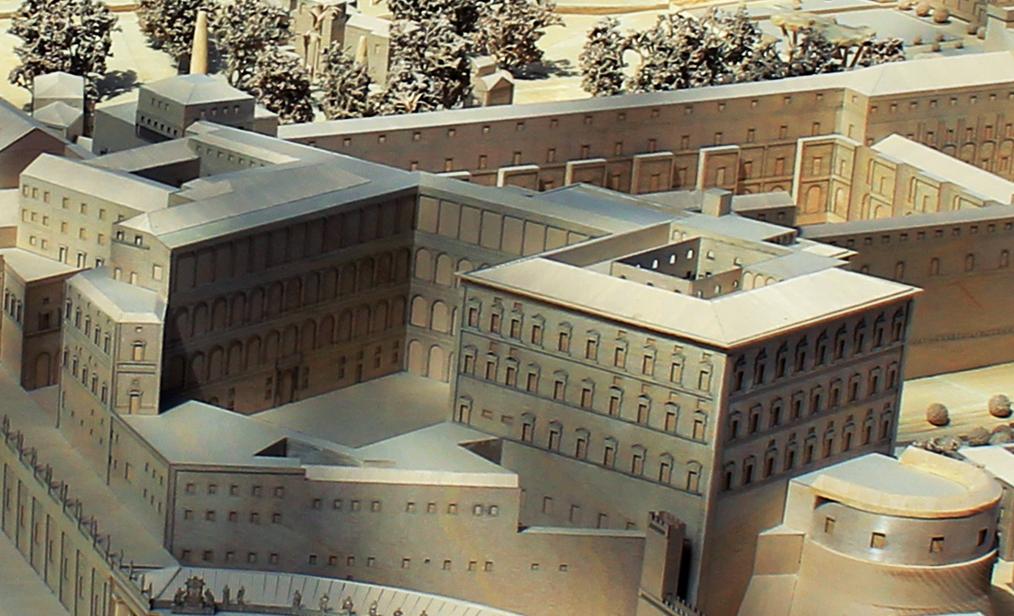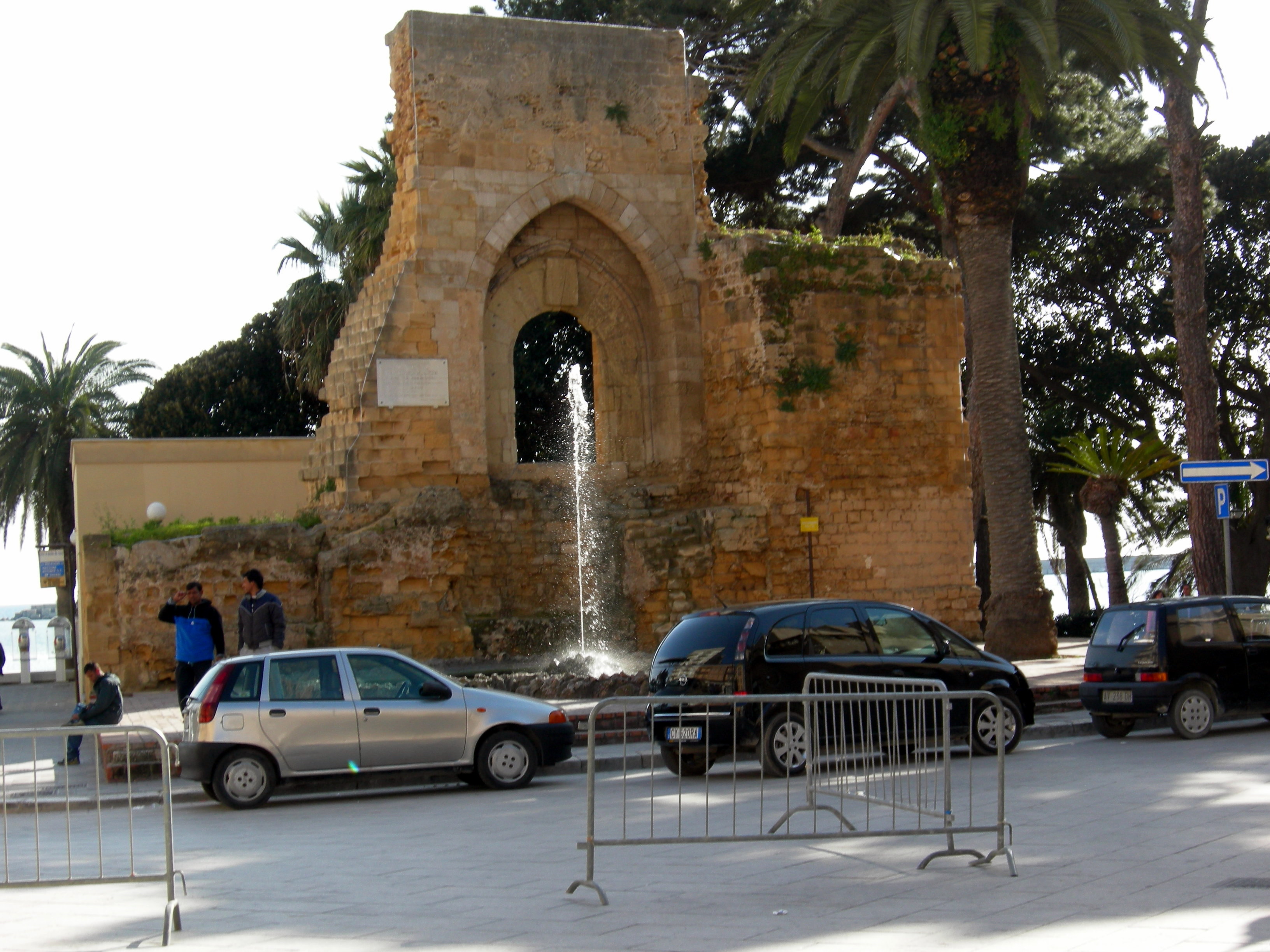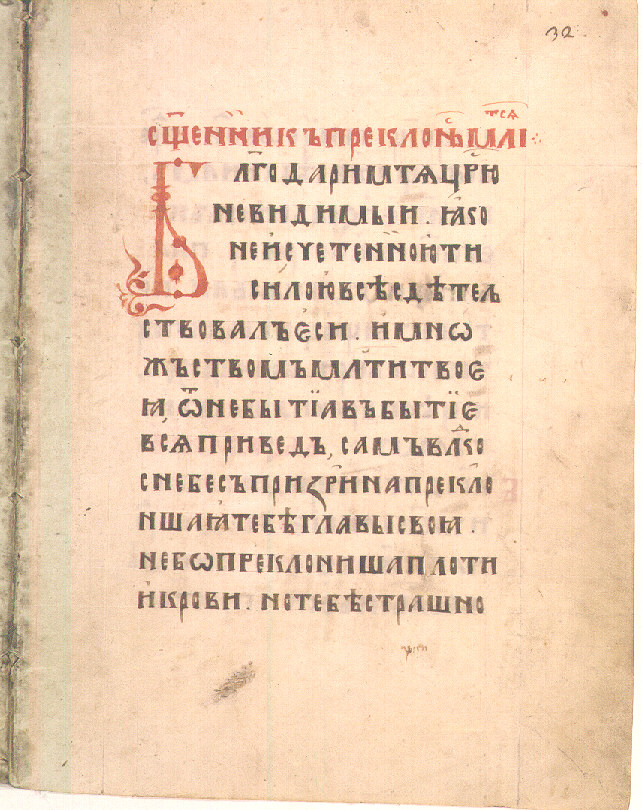|
Papal Conclave, 1458
The 1458 papal conclave (August 16–19), convened after the death of Pope Callixtus III, elected as his successor Cardinal Enea Silvio Piccolomini who took the name ''Pius II''. Death of Callixtus III Pope Callixtus III, the first pope of the House of Borgia, died on August 6, 1458. He was severely criticized due to his nepotism and devotion towards his compatriots of Catalonia, making him very unpopular among the rather xenophobic Roman populace. After the Pope's death an open revolt against him broke out and some of his partisans (e.g. his nephew Pedro Luis de Borja) had to flee Rome. List of participants At the time of Callixtus' death, there were 27 living cardinals, of whom 19 were in Rome, but on August 14 Cardinal Domenico Capranica, archpriest of the College, unexpectedly died. Participating in the conclave were 18 out of the 26 members of the Sacred College: Eight electors were Italian, five Spaniards, two French, two Greeks and one Portuguese. Seven of them were cre ... [...More Info...] [...Related Items...] OR: [Wikipedia] [Google] [Baidu] |
Apostolic Palace
The Apostolic Palace ( la, Palatium Apostolicum; it, Palazzo Apostolico) is the official residence of the pope, the head of the Catholic Church, located in Vatican City. It is also known as the Papal Palace, the Palace of the Vatican and the Vatican Palace. The Vatican itself refers to the building as the Palace of Sixtus V, in honor of Pope Sixtus V, who built most of the present form of the palace. The building contains the papal apartments, various offices of the Catholic Church and the Holy See, private and public chapels, Vatican Museums, and the Vatican Library, including the Sistine Chapel, Raphael Rooms, and Borgia Apartment. The modern tourist can see these last and other parts of the palace, but other parts, such as the Sala Regia (Vatican), Sala Regia (Regal Room) and Cappella Paolina, had long been closed to tourists, though the Sala Regia allowed occasional tourism by 2019. The Scala Regia (Vatican), Scala Regia (Regal Staircase) can be viewed from one end and used ... [...More Info...] [...Related Items...] OR: [Wikipedia] [Google] [Baidu] |
Genoa
Genoa ( ; it, Genova ; lij, Zêna ). is the capital of the Italian region of Liguria and the List of cities in Italy, sixth-largest city in Italy. In 2015, 594,733 people lived within the city's administrative limits. As of the 2011 Italian census, the Province of Genoa, which in 2015 became the Metropolitan City of Genoa, had 855,834 resident persons. Over 1.5 million people live in the wider metropolitan area stretching along the Italian Riviera. On the Gulf of Genoa in the Ligurian Sea, Genoa has historically been one of the most important ports on the Mediterranean Sea, Mediterranean: it is currently the busiest in Italy and in the Mediterranean Sea and twelfth-busiest in the European Union. Genoa was the capital of Republic of Genoa, one of the most powerful maritime republics for over seven centuries, from the 11th century to 1797. Particularly from the 12th century to the 15th century, the city played a leading role in the commercial trade in Europe, becoming one o ... [...More Info...] [...Related Items...] OR: [Wikipedia] [Google] [Baidu] |
Pamplona
Pamplona (; eu, Iruña or ), historically also known as Pampeluna in English, is the capital city of the Chartered Community of Navarre, in Spain. It is also the third-largest city in the greater Basque cultural region. Lying at near above sea level, the city (and the wider Cuenca de Pamplona) is located on the flood plain of the Arga river, a second-order tributary of the Ebro. Precipitation-wise, it is located in a transitional location between the rainy Atlantic northern façade of the Iberian Peninsula and its drier inland. Early population in the settlement traces back to the late Bronze to early Iron Age, even if the traditional inception date refers to the foundation of by Pompey during the Sertorian Wars circa 75 BCE. During Visigothic rule Pamplona became an episcopal see, serving as a staging ground for the Christianization of the area. It later became one of the capitals of the Kingdom of Pamplona/Navarre. The city is famous worldwide for the running of the bu ... [...More Info...] [...Related Items...] OR: [Wikipedia] [Google] [Baidu] |
Mazara Del Vallo
Mazara del Vallo (; ) is a town and ''comune'' in the province of Trapani, southwestern Sicily, Italy. It lies mainly on the left bank at the mouth of the Mazaro river. It is an agricultural and fishing centre and its port gives shelter to the largest fishing fleet in Italy. Recently it has been a hotspot for migrants from North Africa. History Etymology and origins Mazara was founded by the Phoenicians in the 9th century BC with the name of ''Mazar'' who made it an important mercantile emporium. The discovery of Phoenician vases demonstrate the existence of a Phoenician port built between the 6th and 5th centuries BC. Other evidence is in the palace of the Knights of Malta, where finds show the existence of the ancient Punic trading post. Also a stone slab engraved with a Phoenician inscription found in the channel of the river Màzaro is now preserved in the Museum of the Dancing Satyr. It then passed under the control of Greeks, Carthaginians, Romans, Vandals, Ostrogot ... [...More Info...] [...Related Items...] OR: [Wikipedia] [Google] [Baidu] |
Bishop Of Frascati
The Diocese of Frascati (Lat.: ''Tusculana'') is a suburbicarian see of the Holy Roman Church and a diocese of the Catholic Church in Italy, based at Frascati, near Rome. The bishop of Frascati is a Cardinal Bishop; from the Latin name of the area, the bishop has also been called Bishop of Tusculum. Tusculum was destroyed in 1191. The bishopric moved from Tusculum to Frascati, a nearby town which is first mentioned in the pontificate of Pope Leo IV. Until 1962, the Cardinal-Bishop was concurrently the diocesan bishop of the see in addition to any curial duties he possessed. Pope John XXIII removed the Cardinal Bishops from any actual responsibility in their suburbicarian dioceses, and made the title purely honorific. Relationships during the 17th century Like other dioceses close to Rome, Frascati became a ''bishopric of choice'' for Cardinals of powerful papal families during the 17th century; a period known for its unabashed nepotism. Frascati Bishops of that era were signific ... [...More Info...] [...Related Items...] OR: [Wikipedia] [Google] [Baidu] |
Bessarion
Bessarion ( el, Βησσαρίων; 2 January 1403 – 18 November 1472) was a Byzantine Greek Renaissance humanist, theologian, Catholic cardinal and one of the famed Greek scholars who contributed to the so-called great revival of letters in the 15th century. He was educated by Gemistus Pletho in Neoplatonic philosophy and later served as the titular Latin Patriarch of Constantinople. He eventually was named a cardinal and was twice considered for the papacy. His baptismal name was Basil (Greek: Βασίλειος, ''Basileios'' or ''Basilios''). The name Bessarion he took when entering the monastery. He has been mistakenly known also as Johannes Bessarion ( it, Giovanni Bessarione) due to an erroneous interpretation of Gregory III Mammas. Biography Bessarion was born in Trebizond, the Black Sea port in northeastern Anatolia that was the heart of Pontic Greek culture and civilization during the Byzantine and Ottoman periods. The year of his birth has been given as 1 ... [...More Info...] [...Related Items...] OR: [Wikipedia] [Google] [Baidu] |
Nicosia
Nicosia ( ; el, Λευκωσία, Lefkosía ; tr, Lefkoşa ; hy, Նիկոսիա, romanized: ''Nikosia''; Cypriot Arabic: Nikusiya) is the largest city, capital, and seat of government of Cyprus. It is located near the centre of the Mesaoria plain, on the banks of the River Pedieos. According to Greek mythology, Nicosia ( in Greek) was a siren, one of the daughters of Acheloos and Melpomene and its name translates as "White State" or city of White Gods. Nicosia is the southeasternmost of all EU member states' capitals. It has been continuously inhabited for over 4,500 years and has been the capital of Cyprus since the 10th century. The Greek Cypriot and Turkish Cypriot communities of Nicosia segregated into the south and north of the city respectively in early 1964, following the fighting of the Cyprus crisis of 1963–64 that broke out in the city. This separation became a militarised border between the Republic of Cyprus and Northern Cyprus after Turkey invaded the isla ... [...More Info...] [...Related Items...] OR: [Wikipedia] [Google] [Baidu] |
Latin Patriarch Of Constantinople
The Latin Patriarchate of Constantinople was an office established as a result of the Fourth Crusade and its conquest of Constantinople in 1204. It was a Roman Catholic replacement for the Eastern Orthodox Ecumenical Patriarchate of Constantinople, and remained in the city until the reconquest of Constantinople by the Byzantines in 1261, whereupon it became a titular see. The office was abolished in 1964. History Before the East–West Schism in 1054, the Christian Church within the borders of the ancient Roman Empire was effectively ruled by five patriarchs (the "Pentarchy"): In descending order of precedence: Rome by the Bishop of Rome (who rarely used the title "Patriarch") and those of Constantinople, Alexandria, Antioch, and Jerusalem. In the West the Bishop of Rome was recognized as having superiority over the other Patriarchs, while in the East, the Patriarch of Constantinople gradually came to occupy a leading position. The sees of Rome and Constantinople were often at odd ... [...More Info...] [...Related Items...] OR: [Wikipedia] [Google] [Baidu] |
Bishop Of Sabina
A bishop is an ordained clergy member who is entrusted with a position of authority and oversight in a religious institution. In Christianity, bishops are normally responsible for the governance of dioceses. The role or office of bishop is called episcopacy. Organizationally, several Christian denominations utilize ecclesiastical structures that call for the position of bishops, while other denominations have dispensed with this office, seeing it as a symbol of power. Bishops have also exercised political authority. Traditionally, bishops claim apostolic succession, a direct historical lineage dating back to the original Twelve Apostles or Saint Paul. The bishops are by doctrine understood as those who possess the full priesthood given by Jesus Christ, and therefore may ordain other clergy, including other bishops. A person ordained as a deacon, priest (i.e. presbyter), and then bishop is understood to hold the fullness of the ministerial priesthood, given responsibility b ... [...More Info...] [...Related Items...] OR: [Wikipedia] [Google] [Baidu] |
Greece
Greece,, or , romanized: ', officially the Hellenic Republic, is a country in Southeast Europe. It is situated on the southern tip of the Balkans, and is located at the crossroads of Europe, Asia, and Africa. Greece shares land borders with Albania to the northwest, North Macedonia and Bulgaria to the north, and Turkey to the northeast. The Aegean Sea lies to the east of the Geography of Greece, mainland, the Ionian Sea to the west, and the Sea of Crete and the Mediterranean Sea to the south. Greece has the longest coastline on the Mediterranean Basin, featuring List of islands of Greece, thousands of islands. The country consists of nine Geographic regions of Greece, traditional geographic regions, and has a population of approximately 10.4 million. Athens is the nation's capital and List of cities and towns in Greece, largest city, followed by Thessaloniki and Patras. Greece is considered the cradle of Western culture, Western civilization, being the birthplace of Athenian ... [...More Info...] [...Related Items...] OR: [Wikipedia] [Google] [Baidu] |
Isidore Of Kiev
Isidore of Kiev, also known as Isidore of Thessalonica or Isidore, the Apostate ( el, ; russian: Исидор; uk, Ісидор; 1385 – 27 April 1463), was a prelate of Byzantine Greek origin. From 1437 to 1441 he served as the Metropolitan of Kiev and all Rus' in the patriarchate of Constantinople of the Eastern Orthodox Church. He was a supporter of the Union of Florence which he proclaimed in Hagia Sophia on 12 December 1452.Isidore of Kiev , 2008, O.Ed. In the , Isidore was the |
Bishop Of Albenga
A bishop is an ordained clergy member who is entrusted with a position of authority and oversight in a religious institution. In Christianity, bishops are normally responsible for the governance of dioceses. The role or office of bishop is called episcopacy. Organizationally, several Christian denominations utilize ecclesiastical structures that call for the position of bishops, while other denominations have dispensed with this office, seeing it as a symbol of power. Bishops have also exercised political authority. Traditionally, bishops claim apostolic succession, a direct historical lineage dating back to the original Twelve Apostles or Saint Paul. The bishops are by doctrine understood as those who possess the full priesthood given by Jesus Christ, and therefore may ordain other clergy, including other bishops. A person ordained as a deacon, priest (i.e. presbyter), and then bishop is understood to hold the fullness of the ministerial priesthood, given responsibility b ... [...More Info...] [...Related Items...] OR: [Wikipedia] [Google] [Baidu] |







